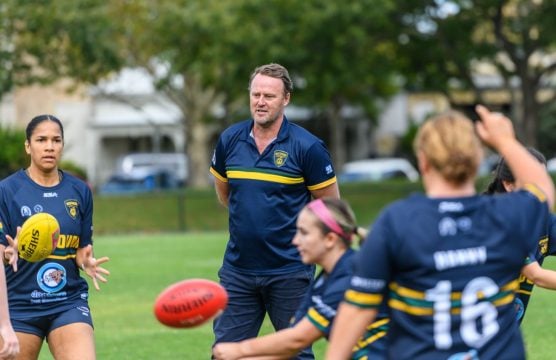
Inaugural VAFA Golf Day a smashing success
A new annual Ammos tradition launched in fine style with the inaugural VAFA Golf Day at the magnificent Kingston Heath on Tuesday. A spectacular sunrise welcomed the full field of

Originally published on sportsperformancetracking.com
Do athletes in the high-level sections really stand out against those in lower divisions?
The Victorian Amateur Football Association (VAFA) is home to former Australian Football League (AFL) athletes, semi-professional local competitors and footballers who play for fun and leisure. With such a diverse participation base, it’s expected to see varied results of activity and performance profiles. But do the GPS profiles really vary greatly between sections? The comparisons may surprise you.
Before diving into the results, it’s important to note that GPS outputs only paint one part of the picture. For example, it is known in AFL, that Total Distance can be influenced by environmental factors such extreme heat. As a result, athletes cover less distance. Why does this occur? It could be said that players are less motivated when it’s hot, or, it could be due to the fact that athletes are trying to preserve energy for higher intensity efforts later on. Every performance is factored by its own context and determining factors which play a key role in the outcome. In order to completely understand overall performance, we must consider several variables such as: role/position, weather, match result, opponent’s performance and coaches’ assessment, to name a few.
When it comes to measuring overall training data (as shown below), the aim of the exercise is to assess whether the training intensity or output is matching that of a game. It may be worth segmenting data to individual drills to gain a deeper understanding of training vs match demands. You could also take your analysis one step further and assess positional demands (eg. Rucks and Backs) for training vs match day outputs (check out GameTraka’s , to see how you can use GPS technology to do just that).
SPT ran an analysis of pre-season training GPS outputs of VAFA teams from Premier, Premier B, Premier C, Division 1, Division 2 and Division 4. Players of a broad range of athletic ability were tracked with the SPT2 device and were involved with a mix of technical/tactical drills and match simulation.
Here’s what we found after comparing the results across 5 key performance metrics:
SPT makes elite performance data and analytics available to semi-professional and amateur leagues. With the ability to track, Total Distance, Top Speed, Hard Running, Sprint Efforts, Impacts and Work Rate coaches and teams of all levels can pinpoint room for improvement and find whether players are best suited for their allocated
Gone are the days when coaches based their training strategies on guesswork. SPT’s GPS analytics are easy to understand and can be viewed in real-time, making the player management process straightforward and actionable. to explore the technology that has helped Aussie Rules teams refine their game-day preparation and rank up the ladder positions.

A new annual Ammos tradition launched in fine style with the inaugural VAFA Golf Day at the magnificent Kingston Heath on Tuesday. A spectacular sunrise welcomed the full field of

“We’re keen to help girls across the western suburbs. They don’t have to play for Westbourne but can join our Academy, come down and do one session a week with

The Victorian Amateur Football Association (VAFA) is excited to announce Big Screen Video (BSV) as a corporate partner and the preferred supplier of electronic scoreboards for the VAFA competition. “Their
